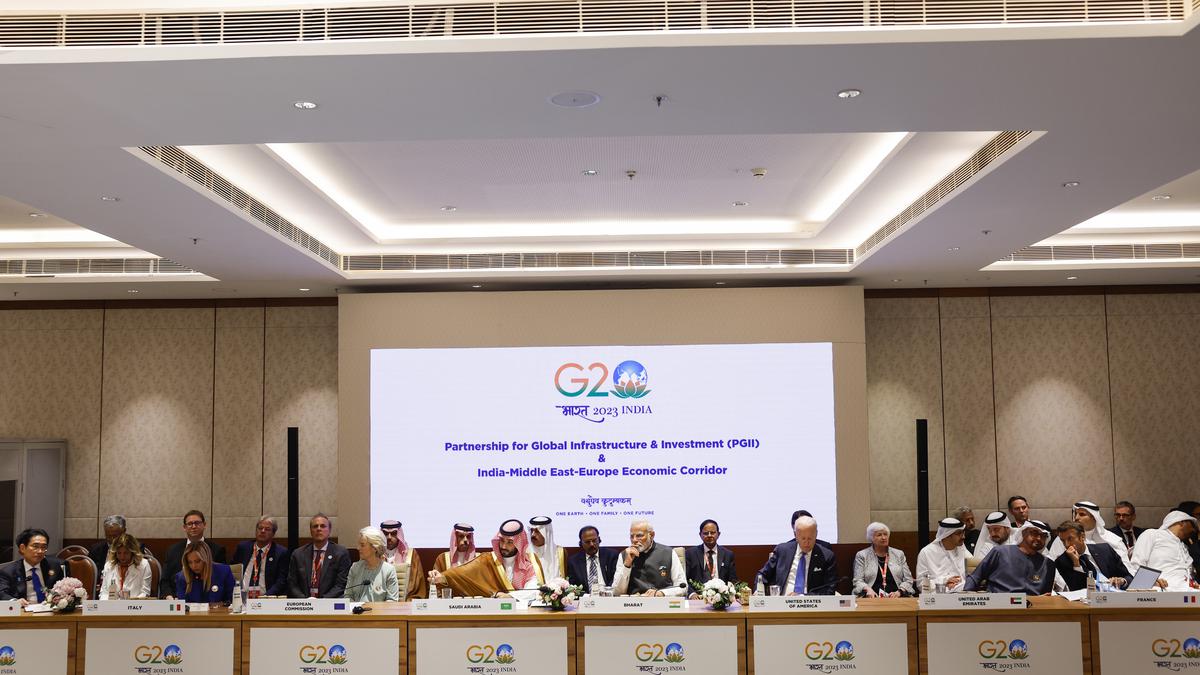
What purpose does the India-Middle East-Europe Economic Corridor (IMEC) serve? | Explained Premium
The Hindu
We explore the purpose, geopolitical relevance and finer details of the India-Middle East-Europe Economic Corridor (IMEC), about which a memorandum of understanding was signed during the recently concluded G-20 summit in India.
The story so far: At a special event on the sidelines of the recently concluded G20 summit in New Delhi, a memorandum of understanding (MoU) was signed to establish the ‘India-Middle East- Europe Economic Corridor’ (IMEC). Other than the two co-chairs of the event, Indian Prime Minister Narendra Modi and U.S. President Joe Biden, the signatories included leaders of Saudi Arabia, the United Arab Emirates (UAE), the European Union (EU), Italy, France and Germany.
The project, which forms part of the Partnership for Global Infrastructure and Investment (PGII), may also serve as a counter to China’s economic influence in the Eurasian region, observers have suggested.
The proposed IMEC will consist of railroad, ship-to-rail networks (road and sea) and road transport routes (and networks) extending across two corridors, that is, the east corridor – connecting India to the Gulf, and the northern corridor – connecting the Gulf to Europe. As per the MoU, the railway, upon completion, would provide a “reliable and cost-effective cross-border ship-to-rail transit network to supplement existing maritime and road transports routes”.
It would enable the transportation of goods and services from India to the UAE, Saudi Arabia, Jordan, Israel and Europe, and back. All in all, it is expected that the corridor would increase efficiency (relating to transit), reduce costs, enhance economic unity, generate jobs, and lower greenhouse gas emissions. This is expected to translate into a “transformative integration of Asia, Europe and the Middle East.”
The MoU states that participants, intend to enable the laying of cables for electricity and digital connectivity, as well as pipes for clean hydrogen export along the railway route.
The MoU states that participants will “work collectively and expeditiously” to arrange and implement all elements of the transit route. These relate to technical design, financing, legal and relevant regulatory standards. A meeting is planned in the next sixty days to carve out an “action plan” with “relevant timetables”.
While Mr. Modi suggested the corridor “promises to be a beacon of cooperation, innovation, and shared progress,” Mr. Biden referred to it as the “real big deal”.

 Run 3 Space | Play Space Running Game
Run 3 Space | Play Space Running Game Traffic Jam 3D | Online Racing Game
Traffic Jam 3D | Online Racing Game Duck Hunt | Play Old Classic Game
Duck Hunt | Play Old Classic Game











